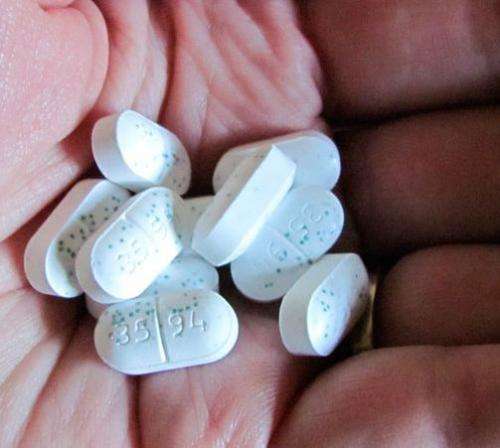Study reveals safety signal from genes that mimic drugs

Prospective mothers taking a new class of cholesterol-lowering drugs might incur higher risk of spina bifida in their future children, according to a study published in the journal Drug Safety by researchers at Vanderbilt University Medical Center.
The first two drugs in the new class, alirocumab and evolocumab, were approved by the Food and Drug Administration in 2015. They're taken by patients who don't respond well to first-line therapy.
The study findings, reported by Rebecca Jerome, MLIS, MPH, Joshua Denny, MD, MS, and colleagues, hinge on a new kind of epidemiological evidence. Nature sometimes beats pharmacology to the punch: name any drug with a targeted molecular mechanism, and there's a chance that there are people walking around with genetic variants that more or less mimic the action of the drug, people who indeed exhibit the benefits and side effects of the drug.
Analyzing the electronic health records of these patients, researchers can learn whether a drug-mimicking variant appears to provide protection against any other medical conditions. That is, they can check for drug-repurposing signals, which could subsequently be tested in clinical trials. With costs for developing new drugs stretching into billions of dollars, drug repurposing is a growing enterprise.
If drug-mimicking genetic variants pose risks for people, analysis of health records could by the same token reveal safety signals for new drugs.
BioVU, one of the largest repositories of its kind, links patient DNA samples to de-identified electronic health records, leaving VUMC researchers well positioned to look for both kinds of signals.
The drugs in this study inhibit an enzyme known as PCSK9. Some people have loss-of-function genetic variants that cause a similar inhibition of PCSK9. As reflected in de-identified health records in BioVU, these patients indeed exhibit markedly lower levels of LDL, or low-density lipoprotein, also called bad cholesterol. Unfortunately, no drug repurposing signals were found in these patients' health records.
But their records do reflect approximately six times the risk of spina bifida.
"We felt it was worth publishing our findings because they were concordant with another study that we found where women who were carrying fetuses that had neural tube defects had lower PCSK9 levels than women carrying fetuses without these defects. When we find signals of this sort, we can turn to the literature to look for context and corroborating studies. Whether these are safety signals or repurposing signals, I think of our approach as weaving together various strands of information," said Jerome, manager of Translational Research for the Vanderbilt Institute for Clinical and Translational Research.
The authors recommend surveillance and further research to validate the BioVU drug safety signal.
"We're not trying to prove anything here. It's more about detecting things that people can then explore with further work, and about starting to build hypotheses regarding what might be going on," Jerome said. "Findings like this could help drug companies and safety investigators get more focused about what they're looking for.
"It would be ideal to know the genotype of the mothers of the children found with this birth defect in our study, but we don't know anything about the mothers—except that they weren't taking PCSK9 inhibitors, because they weren't yet approved when these women would have been pregnant," Jerome said.
This research strategy uses a method developed by Denny at VUMC called PheWAS, or phenome-wide association study.
VUMC has a research incubator devoted to finding and testing drug repurposing candidates, and will soon launch phase II clinical trials of an initial set of candidates.















